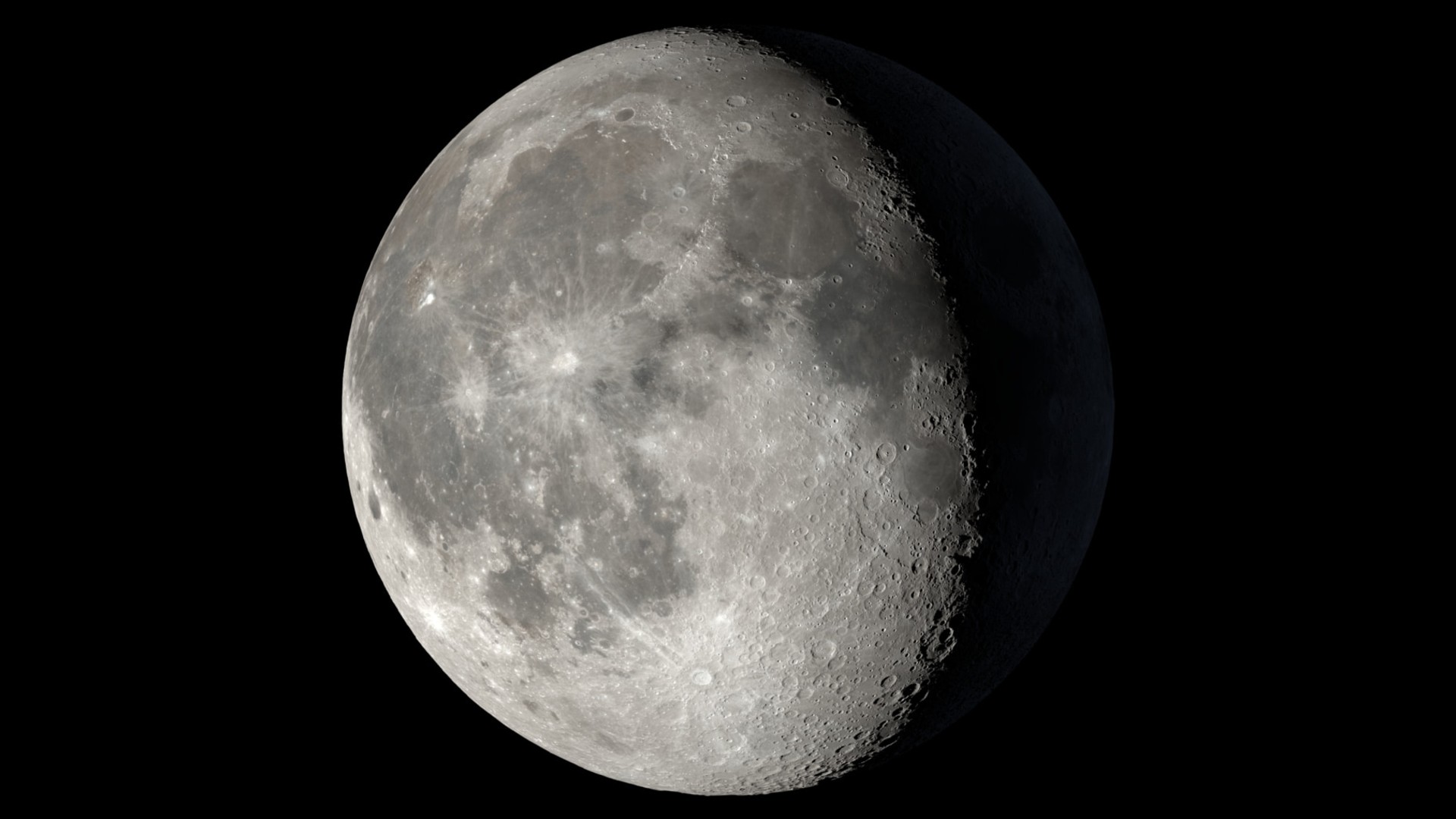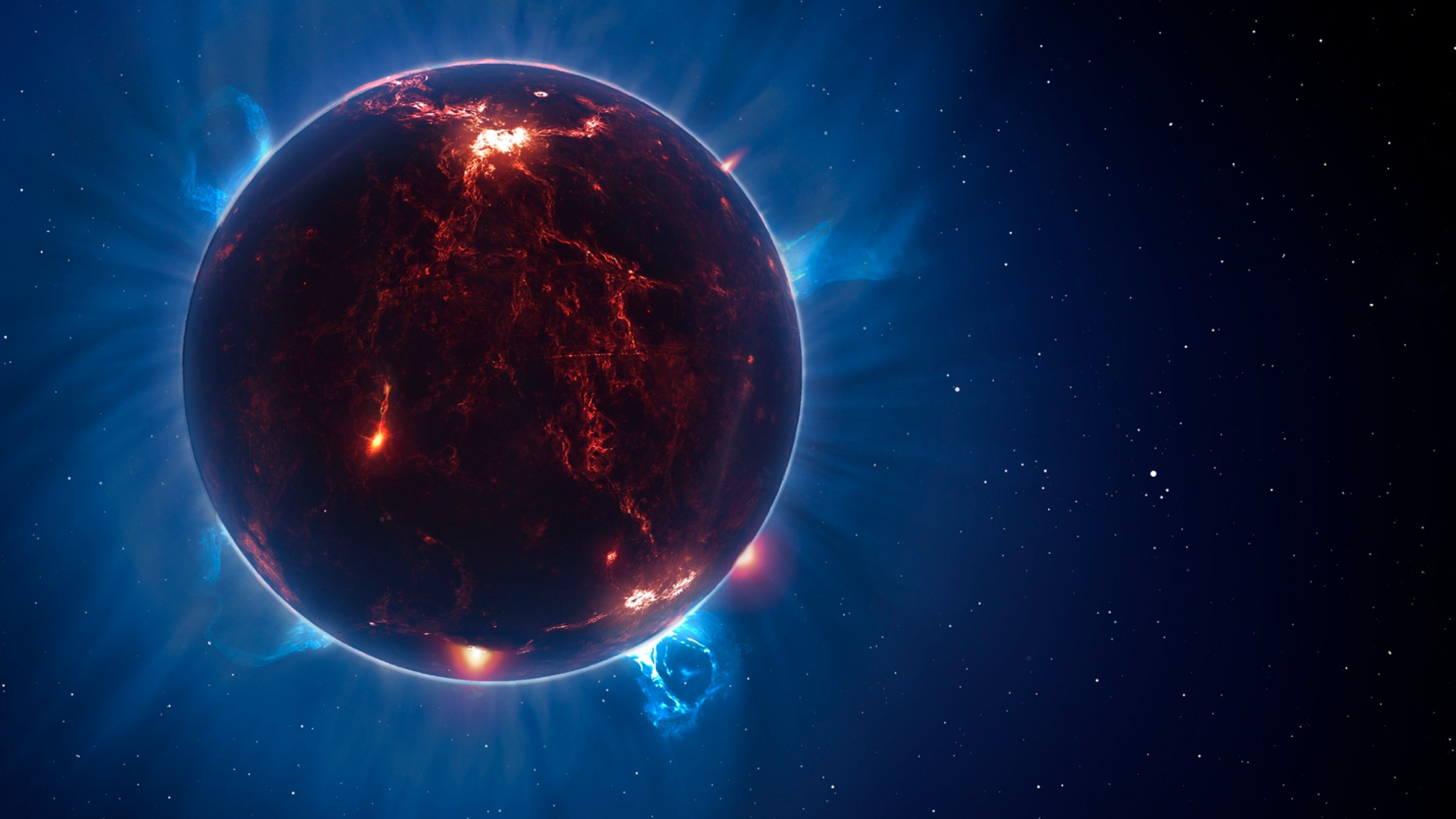The moon may be 100 million years older than we thought
A new study makes predictions that future research could test with lunar rocks acquired by China's upcoming Chang'e 6 mission to the far side of the moon.

The moon may have received a volcanic facelift, making it more than 100 million years older than rocks collected from its surface might suggest, a new study finds.
There are a number of reasons to suspect the moon is older. For instance, there are rare lunar zircon minerals that suggest the moon was born about 4.5 billion years ago. In addition, many scientists who have created simulations of planetary formation suggest that a collision huge enough to create the moon was unlikely to happen a quarter-billion years after the origin of the solar system. Although giant cosmic impacts were common in the solar system's earliest days, the orbital dynamics models suggest that most of the massive rocks behind such titanic clashes were swept up into larger bodies by about 4.4 billion years ago.
Now, a new study suggests a possible explanation for this discrepancy — the lunar surface "remelted" 4.35 billion years ago. This would have reset the age of lunar rocks, masking the moon's true age.
Much about the origin of the moon remains shrouded in mystery. Previous research suggested it formed between a collision between the newborn Earth and a Mars-size rock dubbed Theia, the last giant impact in Earth's history. However, when exactly this clash took place remains uncertain.
To estimate the moon's age, previously geochemists examined lunar samples collected by the Apollo missions and other means. These rocks likely crystallized from the magma ocean that covered the moon after that final giant impact. The analyses suggested the moon is about 4.35 billion years old, which is a relatively young age. In comparison, the solar system began forming about 4.6 billion years ago, or about 250 million years earlier.
"You can't necessarily use the ages recorded by rocks to tell when the moon formed," study lead author Francis Nimmo, a planetary scientist at the University of California Santa Cruz, told Space.com.
The cause of this remelting is the same kind of tidal effects that cause our planet's seas to rise and fall. Just as the moon's gravity tugs on Earth, so too does Earth's gravity pull on the moon.
Get the Space.com Newsletter
Breaking space news, the latest updates on rocket launches, skywatching events and more!
When the moon was first born, it orbited Earth far more closely than it does now, and Earth's tidal effects on the moon were far stronger than they are today. The new study suggests the forces that Earth exerted on the moon would have led to widespread upheaval and intense heating. This remelting could help explain why there are fewer lunar basins from early impacts than might be expected — these impact basins would have been erased.

"We're not really upending conventional wisdom so much as reconciling dueling hypotheses," Nimmo said. "The dynamicists want an 'old' moon and the geochemists want a 'young' moon. Our suggestion can satisfy both."
The researchers noted that Jupiter's moon Io, the most volcanically active body in the solar system, experiences tidal forces similar to what the moon might have early in its history, constantly reshaping its surface. "It demonstrates how interconnected planetary science can be," Nimmo said.
All in all, the research team's computer models suggest the moon "formed about 80 million years after the start of the solar system," Nimmo said.
The new study makes predictions that future research could test with lunar rocks acquired by China's upcoming Chang'e 6 mission to the far side of the moon. "A further lunar sample return would be very helpful," Nimmo said.
The scientists now plan more complex and realistic simulations to pinpoint the effects of tidal heating on the moon's geology. They detailed their findings online Dec. 18 in the journal Nature.
Join our Space Forums to keep talking space on the latest missions, night sky and more! And if you have a news tip, correction or comment, let us know at: community@space.com.

Charles Q. Choi is a contributing writer for Space.com and Live Science. He covers all things human origins and astronomy as well as physics, animals and general science topics. Charles has a Master of Arts degree from the University of Missouri-Columbia, School of Journalism and a Bachelor of Arts degree from the University of South Florida. Charles has visited every continent on Earth, drinking rancid yak butter tea in Lhasa, snorkeling with sea lions in the Galapagos and even climbing an iceberg in Antarctica. Visit him at http://www.sciwriter.us
-
Torbjorn Larsson It explains much if fact such as the magma ocean crystallisation time, a lower number of impact basins than expected, the rarity of crustal metals that sank to the core and the rarity of zircons from before the remelt.Reply
Arguable nitpicks:
The new study suggests the forces that Earth exerted on the moon would have led to widespread upheaval and intense heating.
The orbital resonance that was most heating was suggested to be the Laplace one at about 20 Earth radii distance as the Moon moved away due to (mostly) tidal heat dissipation. Then the effects on Moon's orbital presession from Earth *and Sun* was equal.
Two other major resonances were discussed. The Earth alone "evection" resonance happened at about 10 Earth radii, but they think Earth itself was too molten at the time to not itself dissipate. And the Moon alone Cassini transition at about 30 Earth radii (spin and orbit times equal), but at that time the orbit radius was too large for much heating.
Previous research suggested it formed between a collision between the newborn Earth and a Mars-size rock dubbed Theia, the last giant impact in Earth's history.
The 20 % as massive Theia contributed about 10 % of Earth mass and remelted it. Geological societies have suggested that we should call the proto-Earth Tellus and the collision result Earth.









